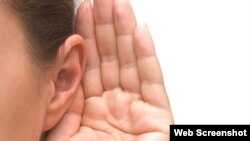The World Health Organization says more than 1 billion teenagers and young adults risk losing their hearing by listening to loud music. To mark International Ear Care Day (March 3), the U.N. agency is urging young people to turn down the volume to prevent irreversible damage to their hearing.
Few things get the blood pumping and the adrenaline flowing like a Bruce Springsteen concert. The Boss’ dynamic rendition of “Born in the U.S.A.” gets his teenage audience thumping and swaying like nothing else.
This joyous experience can have serious consequences for young people, however, as WHO specialist on hearing impairment Shelley Chadha explained.
“When this exposure is particularly loud, prolonged or habitual, the sensory cells are damaged permanently leading to irreversible hearing loss,” said Chadha.
Studies in middle-and high-income countries show nearly 50 percent of teenagers and young adults aged 12 to 35 years are exposed to unsafe levels of sound from personal audio devices, and around 40 percent are exposed to potentially damaging levels of sound at concerts, nightclubs and other entertainment venues.
The World Health Organization says unsafe levels of sound vary. It can mean noise levels of 85 decibels for eight hours a day or 100 decibels for 15 minutes.
Dr. Chadha told VOA when the intensity of sound increases by three decibels, safe listening time goes down by half.
“If a person takes a subway to go from one place to the other for half an hour in the morning and a half an hour in the evening, and every day has to turn up the volume on his device because there is so much of noise of the train and everything around, and is listening to -- let us say 100 decibels for one hour every day, his hearing is going to get irreversibly damaged in a few years, in a couple of years time for sure,” said Chadha.
Chadha said there are simple measures to protect people from unsafe sound levels. She said young people who wear earplugs during concerts can feel as much of a rush from the music at 90 decibels as they can at 110 decibels.
“The fact that earplugs may look uncool may be true today, but if there is a change in behavior that may not necessarily be true in the future and wearing earplugs may actually be cool rather than not," she said.
The World Health Organization advises young people to keep the volume down on personal audio devices and limiting use to less than one hour a day. It says smart phone apps can help monitor safe listening levels.
The U.N. agency estimates 360 million people suffer hearing loss due to various causes, including noise, genetic conditions, infectious diseases and aging. It noted half of all cases of hearing loss are avoidable.






